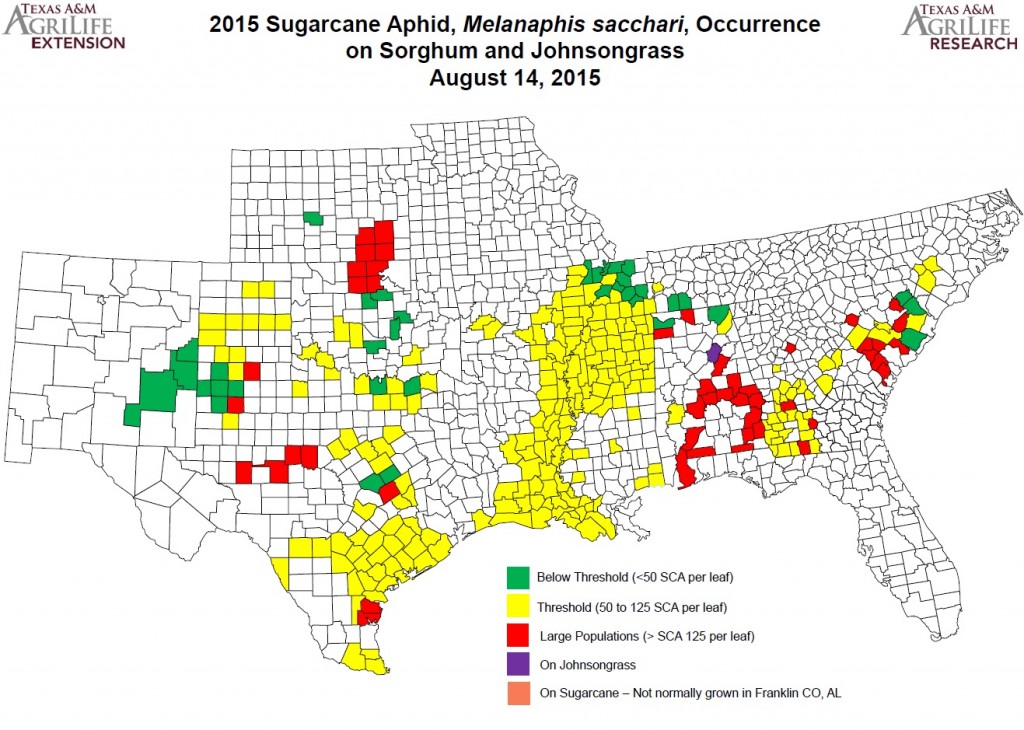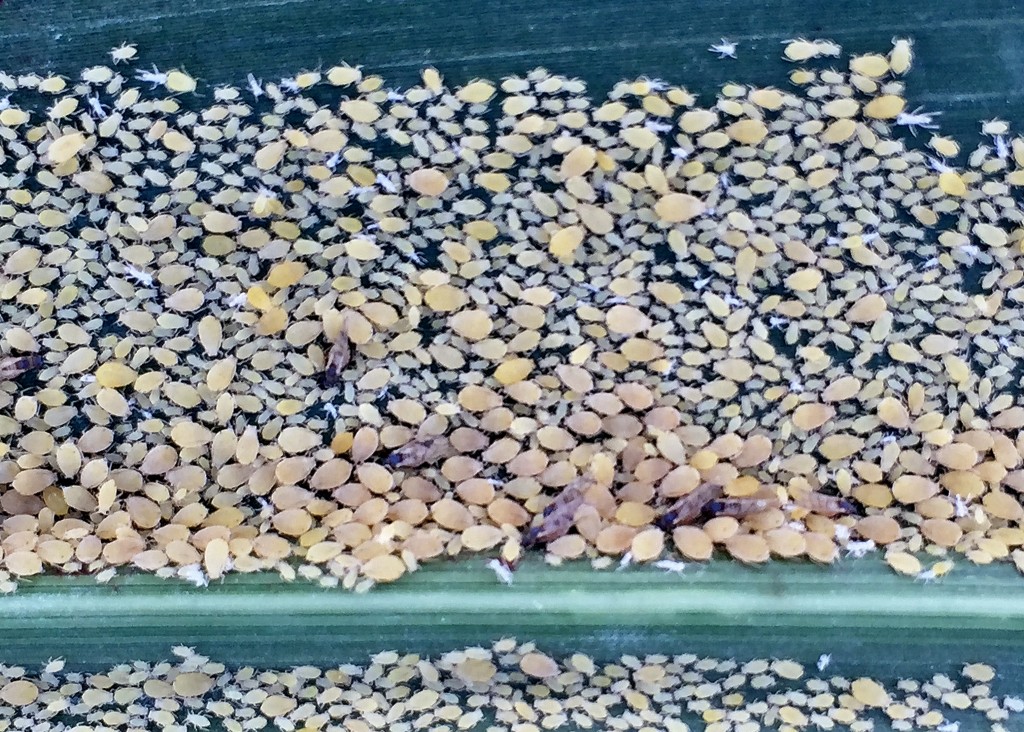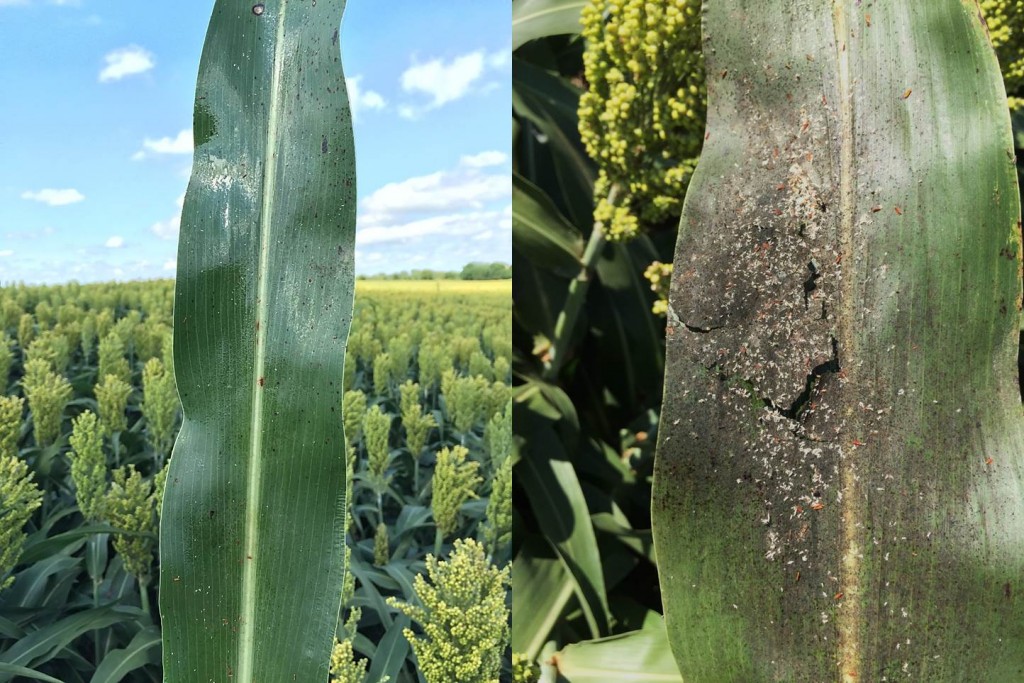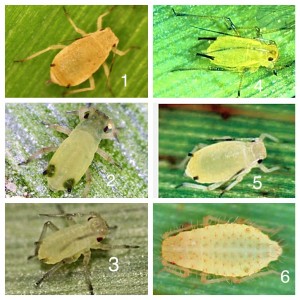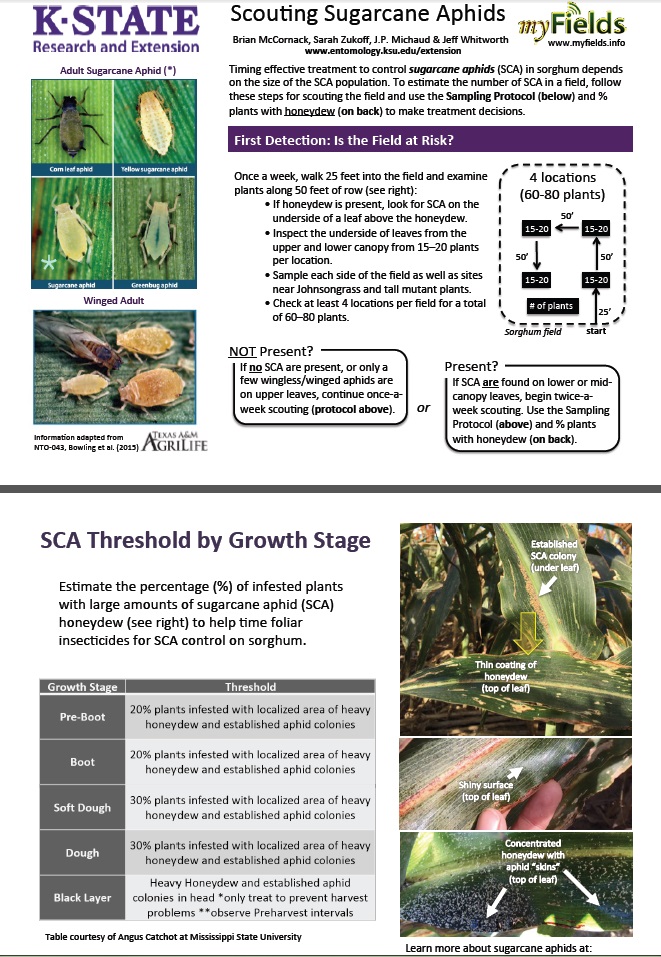In 2013 some sugarcane aphid (SCA) populations made a switch from preferring sugarcane as a host to preferring sorghum. The sorghum-loving sugarcane aphid populations now overwinter in Texas and are passively swept northward when the weather warms.
Current map of US counties with sugarcane aphids.
In 2014, the SCA made it to Sedgwick and Sumner counties with only minor infestations in a few fields. However this summer, SCA populations have come further north than ever before. Currently, they have been reported in Sedgwick, Butler, Cowley, Sumner and Pawnee counties. Populations in most places, except Pawnee county, have been over threshold and many fields have been treated this season already. Treatment options are limited this year to Silvanto and Transform (temporary section 18 use for 2015). With these chemicals be sure to consult the label for pre-harvest intervals. More info on the insecticide options for SCA can be found here.
Scout early and often for the sugarcane aphid in sorghum
Sugarcane aphids are found on the undersides of sorghum leaves. Leaves below infested ones will be covered in honey dew (aphid excretion) and will have a shiny appearance which become colonized with a sooty mold after a period of time (see photos below).
There are several similar species on sorghum that could be confused with the sugarcane aphids especially when the aphids are young. The SCA has a smooth body with a light colored head and light colored legs with dark feet. They have dark colored, short cornicles (tail pipes) with no shading at the base of them as on the corn leaf aphid.
2. corn leaf aphid nymph
3. english grain aphid nymph
4. english grain aphid
5. sugarcane aphid
6. yellow sugarcane aphid
Timing effective control for SCA in sorghum depends on the size of the populations. To estimate the number of SCA and determine if management is needed in a field, follow the guidelines in our new Scouting Sugarcane Aphid guide.
Download our new scouting guide here!
-Sarah Zukoff and Brian McCornack
